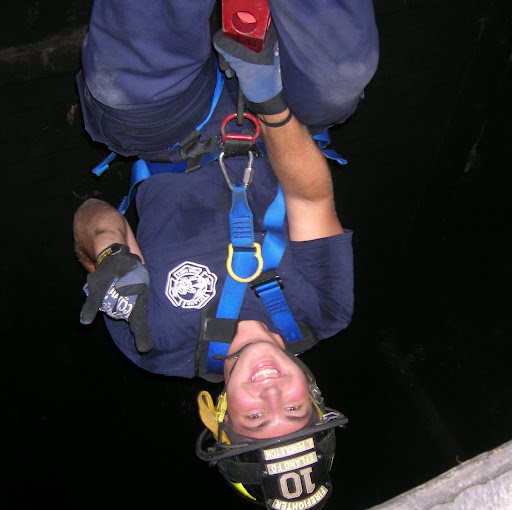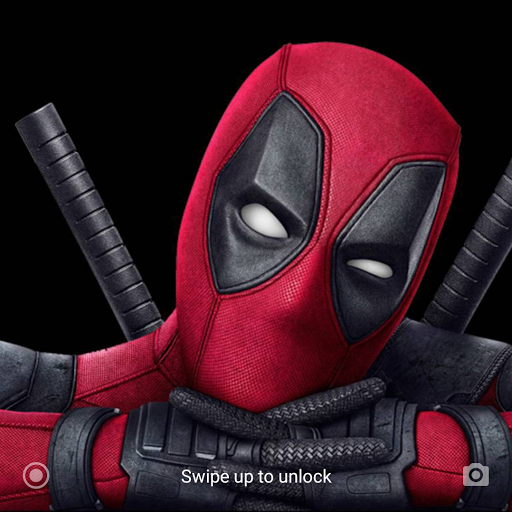Bryan Arthur Pendleton
age ~47
from Pittsburgh, PA
- Also known as:
-
- Bryan A Pendleton
- Brian Pendleton
- Bryan Pendelton
- Bryan Pendletan
Bryan Pendleton Phones & Addresses
- Pittsburgh, PA
- Mountain View, CA
- 430 Ravenswood Ave, Menlo Park, CA 94025
- 850 Coleman Ave, Menlo Park, CA 94025
- 526 7Th Ave, Menlo Park, CA 94025
- San Francisco, CA
- Saint Louis, MO
- Cincinnati, OH
Us Patents
-
System And Method For Establishing Secondary Channels
view source -
US Patent:7426271, Sep 16, 2008
-
Filed:Apr 25, 2003
-
Appl. No.:10/424191
-
Inventors:Kenneth W. Conley - Mountain View CA, US
Dirk Balfanz - Menlo Park CA, US
Bryan A. Pendleton - Menlo Park CA, US
Diana K. Smetters - San Francisco CA, US
Glenn E. Durfee - San Francisco CA, US -
Assignee:Palo Alto Research Center Incorporated - Palo Alto CA
-
International Classification:H04K 1/00
H04L 9/00 -
US Classification:380 33, 380270, 713150, 713168
-
Abstract:A method for establishing a secondary communication channel between at least two computing devices over a network medium through use of a primary channel connects a first computing device with a first telephonic unit and a second computing device with a second telephonic unit. If the two telephonic units are in communication with each other over a primary channel, and communication channels are established between the computing devices and their respective telephonic units, then the first computing device transmits its location information to the second computing device over the primary channel. A connection is then established between the second computing device and the first computing device over a secondary communication channel.
-
Method And System For Securely Sharing Files
view source -
US Patent:7549047, Jun 16, 2009
-
Filed:Nov 21, 2002
-
Appl. No.:10/301931
-
Inventors:Dirk Balfanz - Menlo Park CA, US
Teresa Lunt - Palo Alto CA, US
Diana Smetters - San Francisco CA, US
Ken Conley - Mountain View CA, US
Paul Stewart - Sunnyvale CA, US
Steve Cousins - San Jose CA, US
Bryan Pendleton - Menlo Park CA, US -
Assignee:Xerox Corporation - Norwalk CT
-
International Classification:H04L 9/32
-
US Classification:713169, 713165, 713170
-
Abstract:A system and method for sharing files securely includes server software on a first device configured to communicate with server software operating on one or more other preauthorized devices, such as a second device. The servers communicate with each other securely using cryptographic information exchanged during a preauthorization phase using a range-limited communication channel. The server on the first device obtains file information from the other preauthorized device(s) and combines the information with local file information from the first device. This combined file information is sent to client software operating on the machine, which presents the combined file information to users.
-
Method And Apparatus For Calibrating A Camera-Based Whiteboard Scanner
view source -
US Patent:7657117, Feb 2, 2010
-
Filed:Dec 20, 2004
-
Appl. No.:11/017439
-
Inventors:Eric Saund - San Carlos CA, US
Bryan Pendleton - Menlo Park CA, US
Kimon Roufas - Cambridge MA, US
Hadar Shemtov - Palo Alto CA, US -
Assignee:Palo Alto Research Center Incorporated - Palo Alto CA
-
International Classification:G09G 5/00
-
US Classification:382275, 345178
-
Abstract:In accordance with one aspect of the present exemplary embodiments, a calibration arrangement is configured to assist in calibration of a surface scanning system where the calibration arrangement includes a preconfigured physical object which may embody dimensional information wherein the dimensional information is used to calibrate a surface of the scanning system. In an alternative embodiment, the preconfigured physical object is configured to obtain data for use in calibration of the surface of a pan/tilt surface scanning system.
-
System And Method For Establishing Secondary Channels
view source -
US Patent:7916861, Mar 29, 2011
-
Filed:Sep 28, 2006
-
Appl. No.:11/528904
-
Inventors:Kenneth W. Conley - Mountain View CA, US
Dirk Balfanz - Menlo Park CA, US
Bryan A. Pendleton - Menlo Park CA, US
Diana K. Smetters - San Francisco CA, US
Glenn E. Durfee - San Francisco CA, US -
Assignee:Palo Alto Research Center Incorporated - Palo Alto CA
-
International Classification:H04L 9/32
-
US Classification:380 33, 713168, 713169, 709227, 709228
-
Abstract:A method for establishing a secondary communication channel between at least two computing devices over a network medium through use of a primary channel connects a first computing device with a first telephonic unit and a second computing device with a second telephonic unit. If the two telephonic units are in communication with each other over a primary channel, and communication channels are established between the computing devices and their respective telephonic units, then the first computing device transmits its location information to the second computing device over the primary channel. A connection is then established between the second computing device and the first computing device over a secondary communication channel.
-
Systems And Methods For Authenticating Communications In A Network Medium
view source -
US Patent:7937752, May 3, 2011
-
Filed:Feb 18, 2009
-
Appl. No.:12/388393
-
Inventors:Dirk Balfanz - Redwood City CA, US
Diana Smetters - Belmont CA, US
Kenneth Conley - Mountain View CA, US
Bryan Pendleton - Menlo Park CA, US
Steve Cousins - San Jose CA, US -
Assignee:Palo Alto Research Center Incorporated - Palo Alto CA
-
International Classification:G06F 7/04
G06F 17/30 -
US Classification:726 9, 713159, 713168, 713169, 713170, 713163, 455410, 380277
-
Abstract:A system and method for sharing files securely includes server software on a first device configured to communicate with server software operating on one or more other preauthorized devices, such as a second device. The servers communicate with each other securely using cryptographic information exchanged during a preauthorization phase using a range-limited communication channel. The server on the first device obtains file information from the other preauthorized device(s) and combines the information with local file information from the first device. This combined file information is sent to client software operating on the machine, which presents the combined file information to users.
-
Systems And Methods For Authenticating Communications In A Network Medium
view source -
US Patent:20050100166, May 12, 2005
-
Filed:Nov 10, 2003
-
Appl. No.:10/703437
-
Inventors:Diana Smetters - San Francisco CA, US
Kenneth Conley - Mountain View CA, US
Bryan Pendleton - Menlo Park CA, US
Glenn Durfee - San Francisco CA, US
Steve Cousins - San Jose CA, US
Dirk Balfanz - Menlo Park CA, US
Hadar Shemtov - Palo Alto CA, US -
Assignee:PARC INC. - Palo Alto CA
-
International Classification:H04L009/00
G06F011/30 -
US Classification:380277000, 713163000, 713201000
-
Abstract:A location-limited channel is implemented using physical exchanges of physical tokens. The physical tokens are implemented using writeable or re-writeable storage media. Location-limited channels, when used to implement pre-authentication protocols, provide demonstrative identification and authenticity. A group originator loads pre-authentication information and a network location from a communication device onto the location-limited physical token channel. The location-limited physical token channel is passed to another participant, who copies the originator's pre-authentication information and location onto that participant's communication device. That participant then adds that participant's own pre-authentication information and network location onto the location-limited physical token channel. This is repeated until the last participant passes the location-limited physical token channel back to the group originator. The originator thus has pre-authentication information and network locations for all other participants. The originator establishes secure communications with each participant based on the originator' and that participant's shared information.
-
Systems And Methods For Verifying A User Based On Reputational Information
view source -
US Patent:20150128236, May 7, 2015
-
Filed:Mar 4, 2014
-
Appl. No.:14/196796
-
Inventors:- Mountain View CA, US
Edison Tan - Brooklyn NY, US
Sacha Christophe Arnoud - San Francisco CA, US
David John Abraham - Brooklyn NY, US
Michael Crawford - Sydney, AU
Colin McMillen - Somerville MA, US
Joseph Andrew McClain - Cranberry Township PA, US
Bryan Arthur Pendleton - Swissvale PA, US
Mark R. Russell - Prospect PA, US
Luis Von Ahn - Pittsburgh PA, US -
Assignee:GOOGLE INC. - Mountain View CA
-
International Classification:H04L 29/06
-
US Classification:726 7
-
Abstract:Systems and methods for verifying a user based on reputational information are provided. In particular, a computerized CAPTCHA system consisting of one or more computers can determine a trust score based on one or more reputation signals associated with a user computing device, select a challenge to provide to the user computing device based on the trust score, and determine whether to verify the user computing device based on a received response to the challenge and/or the trust score.
Resumes

Software Engineer
view sourceLocation:
Pittsburgh, PA
Industry:
Computer Software
Work:
Google, Inc. - Greater Pittsburgh Area since Feb 2011
Software Engineer
Don't Just Sit There - Do Something! since Feb 2012
Co-creator and Executive Producer
Carnegie Mellon University Aug 2007 - Dec 2010
Graduate Student
Palo Alto Research Center Jun 2001 - Jul 2007
Member of Research Staff
Software Engineer
Don't Just Sit There - Do Something! since Feb 2012
Co-creator and Executive Producer
Carnegie Mellon University Aug 2007 - Dec 2010
Graduate Student
Palo Alto Research Center Jun 2001 - Jul 2007
Member of Research Staff
Education:
Carnegie Mellon University 2007 - 2010
PhD, not completed, Human Computer Interaction Washington University in St. Louis 1996 - 2001
BS/MS, Computer Science
PhD, not completed, Human Computer Interaction Washington University in St. Louis 1996 - 2001
BS/MS, Computer Science
Skills:
Software
Languages:
English

Bryan Pendleton
view source
Bryan Pendleton
view source
Bryan Pendleton
view source
Bryan Pendleton
view source
Software Engineer At Google, Inc.
view sourceLocation:
Greater Pittsburgh Area
Industry:
Computer Software
Flickr
Youtube
Classmates

Bryan Pendleton
view sourceSchools:
Belle High School Belle MO 1988-1992
Community:
Joann Diestelkamp, Shelly Branson, Felena Harris

Brian Pendleton | Hall's ...
view source
T Brian Pendleton | Mt. V...
view source
Brian Pendleton | North R...
view source
Brian Pendleton | New Tri...
view source
Westinghouse High School,...
view sourceGraduates:
Yvonne Henderson (1968-1972),
Andrea Johnson (1985-1989),
Karen Davis (1994-1998),
Ruth Whittaker (1979-1983),
Bryan Pendleton (1991-1995)
Andrea Johnson (1985-1989),
Karen Davis (1994-1998),
Ruth Whittaker (1979-1983),
Bryan Pendleton (1991-1995)

Belle High School, Belle,...
view sourceGraduates:
Benjamin Mc Intyre (1987-1991),
Gina Gina Weller (1990-1994),
Dawn Rehmert (1991-1995),
Beth Menser (1984-1988),
Bryan Pendleton (1988-1992)
Gina Gina Weller (1990-1994),
Dawn Rehmert (1991-1995),
Beth Menser (1984-1988),
Bryan Pendleton (1988-1992)

Atherwood Elementary Scho...
view sourceGraduates:
Brian Pendleton (1974-1978),
Manuel Arteaga (1985-1989),
Bobby Oliver (1993-1994),
Denise Santiago (1973-1980)
Manuel Arteaga (1985-1989),
Bobby Oliver (1993-1994),
Denise Santiago (1973-1980)

Bryan Pendleton
view source
Bryan Pendleton
view source
Bryan Pendleton
view source
Bryan Pendleton
view source
Bryan Pendleton
view source
Bryan Pendleton
view source
Bryan Pendleton
view sourceGoogleplus

Bryan Pendleton
Lived:
Pittsburgh, PA
Menlo Park, CA
Mountain View, CA
Saint Louis, MO
Sharonville, OH
Menlo Park, CA
Mountain View, CA
Saint Louis, MO
Sharonville, OH
Work:
Google - Software Engineer (2011)
PARC - Member of Research Staff (2001-2007)
PARC - Member of Research Staff (2001-2007)
Education:
Washington University in St. Louis - Computer Science, Carnegie Mellon University - Abandoned PhD in Human Computer Interaction

Bryan Pendleton
Work:
Chapel Hill FD - Firefighter (2006)
Education:
Durham Tech - Fire science
Bragging Rights:
Newly wed!!

Bryan Pendleton

Bryan Pendleton

Bryan Pendleton

Bryan Pendleton

Bryan Pendleton
Work:
Baker Hughes - Project Engineer (1997)
Education:
University of Houston - Mechanical Engineering

Bryan Pendleton
Plaxo

Bryan Pendleton
view sourcePittsburgh, PAGraduate Student at Carnegie Mellon University Past: Member of Research Staff at Palo Alto Research Center
Myspace
Get Report for Bryan Arthur Pendleton from Pittsburgh, PA, age ~47














